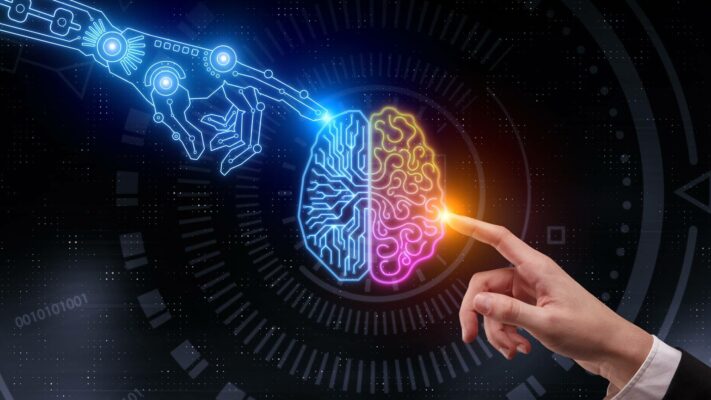The Giant Stride Of AI In Medical Practice
Artificial Intelligence (AI) has been revolutionizing various domains, including the medical field. From improving diagnostic accuracy to personalising treatment plans and streamlining administrative tasks, AI is transforming healthcare delivery. The integration of AI in medical imaging, predictive analytics, robotic surgery, and virtual health assistants is paving the way for more efficient, accurate, and accessible healthcare services.
The healthcare sector is exceptionally delicate, necessitating utmost caution when embracing emerging technologies because it directly impacts human life, unlike fields such as computing, engineering, social sciences, and environmental studies. In healthcare, a costly mistake can lead to the irreversible loss of life, whereas mistakes in other fields typically result in replaceable financial or property losses.
Additionally, building patient confidence in allowing machines to provide healthcare is a significant challenge when deploying new technologies. Despite these challenges, AI is making substantial strides in healthcare delivery.
The deployment of emerging technology in healthcare can be viewed from three main perspectives: technology operating directly with the patient, such as MRI scanning and robotic surgery; technology indirectly benefiting the patient, like decision support systems and telemedicine platforms; and technology that enhances the productivity of medical professionals, including electronic health record systems and administrative automation tools. Each perspective contributes uniquely to improving healthcare delivery, ensuring better patient outcomes, and enhancing the efficiency of medical professionals.
On the International Space Station, medical services are highly limited due to the absence of fully equipped hospitals, medical professionals, and surgeons typically found on earth. The International Space Station primarily accommodates astronauts, supported by a small, specialised staff. However, there has been a recent increase in civilian visitors to the International Space Station for various purposes such as data collection, data analysis, experiments, and even tourism.
These growing presence of people heightens the likelihood of requiring emergency medical attention. Medical emergencies can vary in severity, and both astronauts and civilians may find themselves in need of urgent care, including emergency surgery. Given the constraints of the International Space Station, performing surgery on board presents a unique challenge.
To address this, a robotic surgery platform has been developed, allowing surgeons on earth to conduct surgical procedures remotely on the International Space Station. This innovation ensures that even in the event of a serious medical emergency, timely and effective surgical intervention can be provided.
A significant milestone in this field was achieved when a simulated surgical procedure was successfully performed on the International Space Station, with surgeons operating from the earth. This breakthrough demonstrates the potential for advanced telemedicine and robotic surgery to ensure the health and safety of all individuals aboard the International Space Station.
In Nigeria, there is an acute scarcity of medical professionals and high-tech medical facilities, particularly in rural areas where high-profile medical professionals are almost nonexistent. This shortage is further compounded by the “JAPA syndrome,” which refers to the massive exodus of medical consultants and specialists to countries such as the UK, Saudi Arabia, Canada, and the United States. This brain drain has significantly compounded the challenges of providing adequate medical attention in Nigeria.
To address these issues, it is crucial to deploy emerging technologies to extend medical services to underserved areas. For instance, robotic surgeon platforms can enable surgeons from anywhere in the world to perform surgeries on patients in rural areas or hospitals that lack the necessary expertise. Additionally, integrating Large Language Models like GPT-40 into the healthcare system can support local healthcare providers with diagnosis assistance, patient communication, and medical information dissemination.
These technologies can also aid in clinical decision-making, emergency response, administrative tasks, personalised health advice, and mental health support. By leveraging these advanced tools, Nigeria can significantly improve healthcare delivery, particularly in rural areas, reducing disparities in access to medical services and enhancing the overall quality of healthcare.
AI can be employed to identify potential disease outbreaks, significantly impacting public health management. By predicting outbreaks before they occur, AI allows public health professionals to devise and implement measures to halt the spread of disease. For instance, AI algorithms can analyse vast amounts of data from various sources, such as social media, health records, and environmental sensors, to detect early warning signs of an outbreak.
ad
Additionally, AI can model and predict the pattern of infection spread, enabling targeted interventions and resource allocation to prevent widespread transmission. This proactive approach not only helps in controlling the outbreak but also minimises the economic and social impact on communities.
AI techniques can be employed to significantly enhance the visual quality of medical images with poor resolution. Using advanced image restoration methods, AI algorithms can reconstruct and refine these images, bringing out clearer details that were previously obscured. This improvement in visual quality can aid in more accurate diagnosis and treatment planning. For example, AI-powered tools can remove noise, correct distortions, and enhance contrast in medical images such as X-rays, MRIs, and CT scans.
By leveraging AI techniques, these tools can learn from vast datasets of high-quality images to apply sophisticated corrections and enhancements to lower-quality ones. This advancement not only improves the accuracy of medical imaging but also reduces the need for repeat scans, thereby lowering patient exposure to radiation and other risks.
For patients experiencing difficulties in speaking due to voice impairments, AI techniques can be utilised to read lips and convert the visual information into text. This technology uses advanced AI technique to accurately interpret lip movements. By analysing these movements, AI systems can generate corresponding text, facilitating communication for those with speech difficulties for the medical professional to understand their request.
This capability not only improves the quality of life for individuals with voice impairments but also enhances accessibility to healthcare delivery services. Additionally, AI-driven lip-reading technology can be integrated with other assistive devices, like text-to-speech systems, to provide a more seamless and comprehensive communication solution for patients.
Surely, the advancement in AI is expected to impact healthcare delivery in the future.
Haruna Chiroma, Ph.D, University of Hafr Al Batin, Saudi Arabia, [email protected]















Post Comment